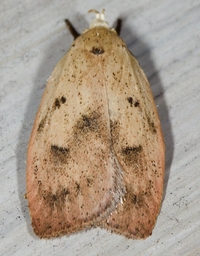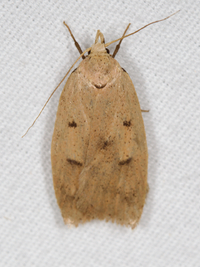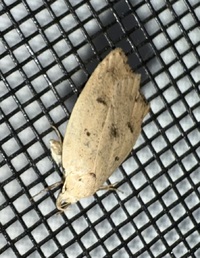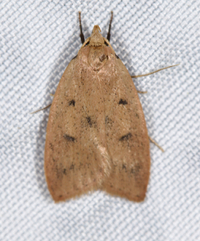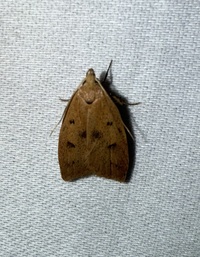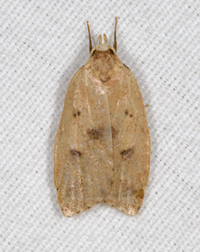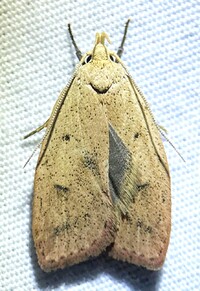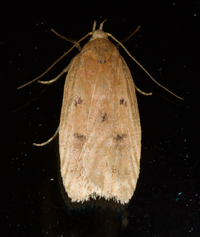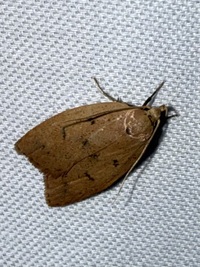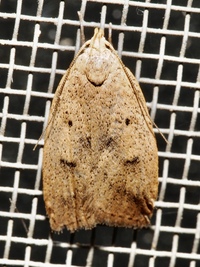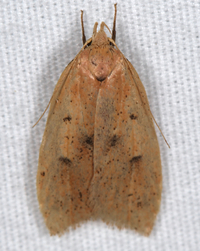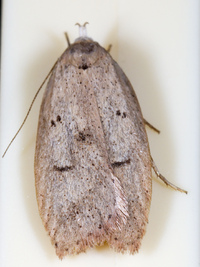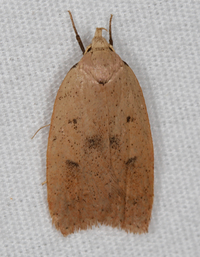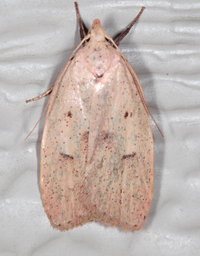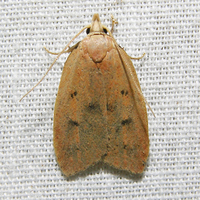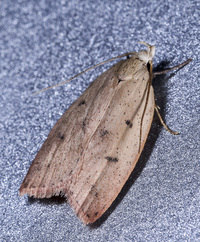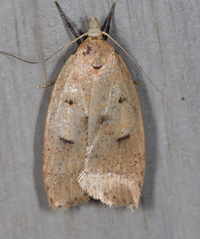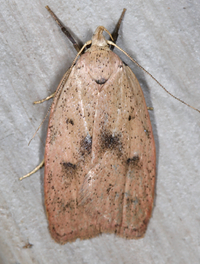| Larval Host Plants: The larvae are highly polyphagous and feed on numerous hardwoods (Prentice, 1966; Chapman and Lienk, 1971; Baker, 1972; Clarke, 1941; Robinson et al., 2010; Marquis et al., 2019; Blair, 2023). The known hosts include Red Maple (Acer rubrum), Silver Maple (A. saccharinum), Sugar Maple (A. saccharum), Downy Serviceberry (Amelanchier arborea), Yellow Birch (Betula alleghaniensis), Paper Birch (B. papyrifera), hickories (Carya), including Pignut Hickory (C. glabra) and Mockernut Hickory (C. tomentosa), American Chestnut (Castanea dentata), Buttonbush (Cephalanthus occidentalis), Flowering Dogwood (Cornus florida), Gray Dogwood (Cornus racemosa), hazelnuts (Corylus), hawthorns (Crataegus), American Beech (Fagus grandifolia), White Ash (Fraxinus americana), Honey Locust (Gleditsia triacanthos), American Witch-hazel (Hamamelis virginiana), Butternut (Juglans cinerea), Common Apple (Malus domestica), Black Gum (Nyssa sylvatica), American Hop-hornbeam (Ostrya virginiana), Balsam Poplar (Populus balsamifera), Sweet Cherry (Prunus avium), Fire Cherry (P. pensylvanica), Black Cherry (P. serotina), pears (Pyrus), White Oak (Quercus alba), Chestnut Oak (Q. montana), Northern Red Oak (Q. rubra), Black Oak (Q. velutina), willows (Salix), American Mountain Ash (Sorbus americana), Common Lilac (Syringa vulgaris), American Basswood (Tilia americana), American Elm (Ulmus americana), Slippery Elm (U. rubra) and viburnums (Viburnum). In North Carolina, larvae have been recorded feeding on Black Cherry, Post Oak (Q. stellata), and American Basswood.
- View |

 »
»

